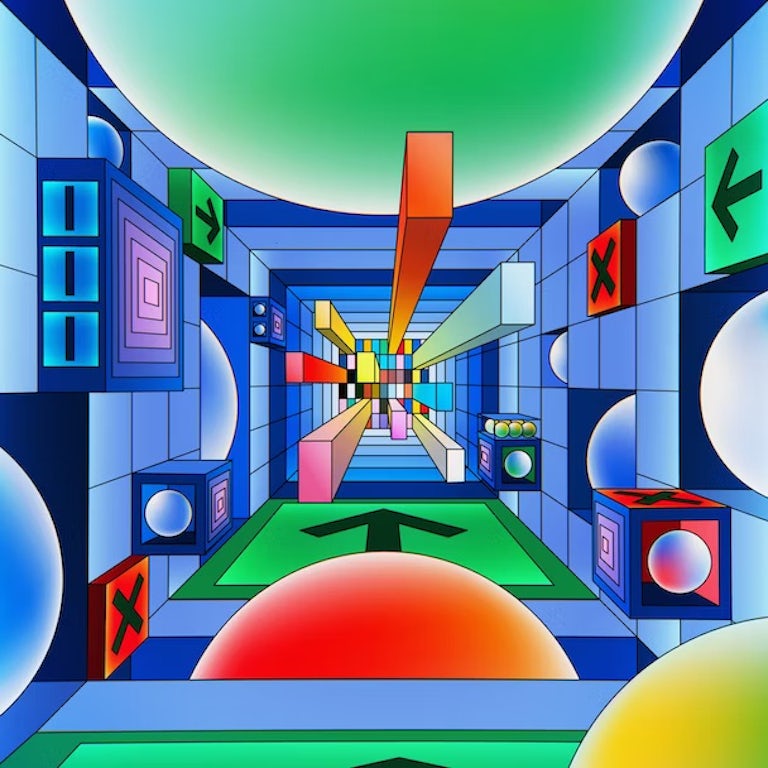Shopping Bag (0)
Your shopping bag is empty


There’s no hotter issue in the creative world than the question of whether AI can be creative – or merely recreative. Here, Amplify’s Alex Wilson looks at the output from a creative director’s point of view.
“Creativity is just connecting things” – Steve Jobs.
Every day my inbox and feeds are filled with the latest piece of AI ‘creativity’. Most recently: almost-weekly drops of exploration into what existing IP might look like if directed by Wes Anderson, like ‘The Galactic Menagerie’.
I choose the term ‘exploration’ deliberately, because when I look at the current trend of AI output, what I see are explorations. Questions answered. Questions like:
What would Batman look like, directed by Akira Kurosawa? What would a Harry Potter x Balenciaga collab look like? What would celebrities consuming their own names look like? What would Republican Drag Queens look like? What would the Marvel High School: Class of ‘95 Yearbook look like? What does a fully AI-generated pizza ad look like?
The answers to these questions are usually a combination of fascinating, terrifying and hilarious.
“Make visible what, without you, might perhaps never have been seen” – Robert Bresson
It may take a creative mind to think about combining these worlds and IP, or exploring different elements of the worlds from which they take inspiration, but the very nature of their existence relies on scraping existing elements. Or in those words of Steve Jobs, connecting those elements together.
The same could be said for more ‘traditional’ forms of creative. ‘Steal what you love’ is a common adage, but taking inspiration from what exists and literally extrapolating elements from the thing you love is a fine line to walk.
Shortly before his passing, the great Virgil Abloh collaborated with Mattel to create monochromatic versions of the iconic Masters of the Universe toy line that recontextualized the characters and allowed him to reimagine the 80s franchise that inspired him as a child.
If you prompt an AI tool to do the same, after some variations you may ultimately come out with something similar to what Virgil created, but what you will lack is story. The why. Virgil’s creations existed because he wanted to harness the imagination and nostalgia he had as a child while intercepting collector culture, drawing a parallel between art collector and comic book collector.
The ‘why’ behind so much AI art is what differentiates exploration from creativity.
Especially when AI’s points of reference are our own society and documentation – which, as any piece of recent history will make clear, is not exactly a balanced, diverse and representative picture to paint.
Which brings me to Black Tales Untold. AI is a reflection of us. It holds up a mirror to our bias and rhetoric. It can only reference what it has access to. in a world where history is written by those that control the narrative, Aaron Taylor has harnessed this same technology to shine a light on forgotten black icons and represent their excellence without a hint of trauma, something modern storytelling of black history has been criticized for.
Taylor celebrates and showcases these individuals, creating snapshots into the movies they’ve never had; building their subsequent worlds and telling the stories within them.
When used as an effective tool, AI’s ability to empower a creative to realize their vision or sell an idea is where we really start to see the true potential of the technology. You don’t tell a client you use Photoshop or InDesign to create visuals, so why do we feel the need to shout about our AI tools?
There have been multiple examples of AI causing concern or chaos in the creative and arts disciplines. The latest WGA strike is, in part, a reaction to Hollywood viewing it as a labor-reducing opportunity, replacing elements of a writer's role, rather than tools for the writers to use. The Sony World Photography Awards awarded a prize to Photographer Boris Eldagsen who later revealed he submitted an AI-generated image.
In 1893, London-based arts publication The Studio asked the question; “Is the camera the friend or foe of art?” The 130 or so years since has clearly shown the camera could live as part of art, a medium, an art form in itself, a powerful tool, rather than a detractor from the art world.
Why’s that? Arguably because cameras, much like AI art tools, need to be pointed in the right direction. They need a finger to trigger the moment in time. They lack our humanity, our soft skills, our instincts and our experiences.
For every dose of nightmare fuel like an AI film of Will Smith eating spaghetti, there’s Baz Luhrmann using it to invisibly blend the face of Austin Butler with Elivs for a feature film. For every AI designer or influencer rolled out as a PR stunt, there’s someone using AI tools to make QR codes a thing of beauty.
AI strives to give you an answer. Whether there is one or not.
Art is never about finding a conclusive answer, and the creative process is an internal or collaborative back-and-forth, an imperfect process that isn’t a question-and-answer process.
AI is a tool for exploration and connecting things. A powerful application and mode of collaboration to allow creatives more flexibility, freedom and modes for expression and optimization. But the word ‘creativity’, for now at least, belongs to us.
To read the full article, visit The Drum.